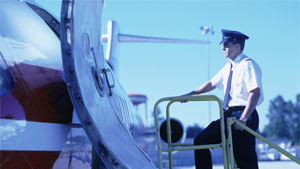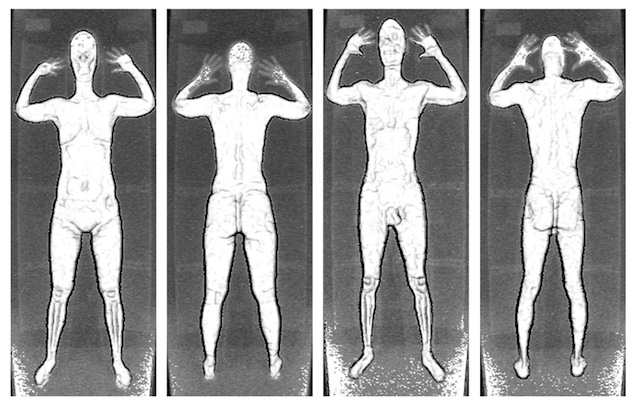Just over a week ago, we learned that the Transportation Security Administration (TSA) was stepping up its efforts to get Americans in front of its new clothes-piercing "backscatter" and "millimeter wave" scanners at airports. The devices have raised all sorts of concerns about privacy (they can see through clothes) and radiation, but those who don't go through them will now suffer an intimate pat-down of nut-busting proportions. And pilots have had enough.
Dave Bates heads the Allied Pilots Association, which represents American Airlines pilots and claims to be the largest independent pilots' group in the world. Bates recently told his members that they should refuse the new scans, together know as "Advanced Imaging Technology" (AIT). And he thinks the new pat-downs are a disgusting breach of a pilot's "privacy and dignity."
The scanning devices in question have been rolled out over the last few years, and TSA insists that they are both safe and private. "A single scan using backscatter technology produces exposure equivalent to two minutes of flying on an airplane," says the government.
As for those see-through-the-clothes pictures, they are low-resolution, blurred by algorithms, and immediately destroyed. "Advanced imaging technology cannot store, print, transmit or save the image, and the image is automatically deleted from the system after it is cleared by the remotely located security officer," says the TSA. "Officers evaluating images are not permitted to take cameras, cell phones or photo-enabled devices into the resolution room." (There have been occasional exceptions, however.)
And that peek under the clothes can be useful for all sorts of things. As the TSA said in a blog post earlier this year, "Using AIT, our officers are finding things like small packages of powder-based drugs hidden on the body. When I say small, I mean that one packet was smaller than a thumb print. We have also found small weapons made of composite, non-metallic materials."



 Loading comments...
Loading comments...
